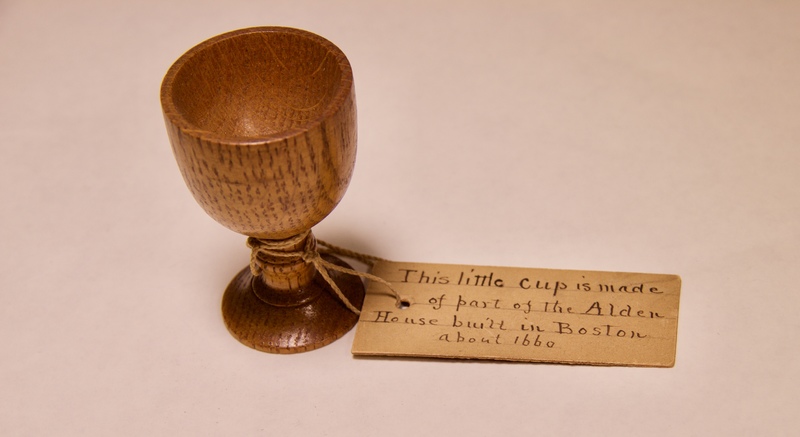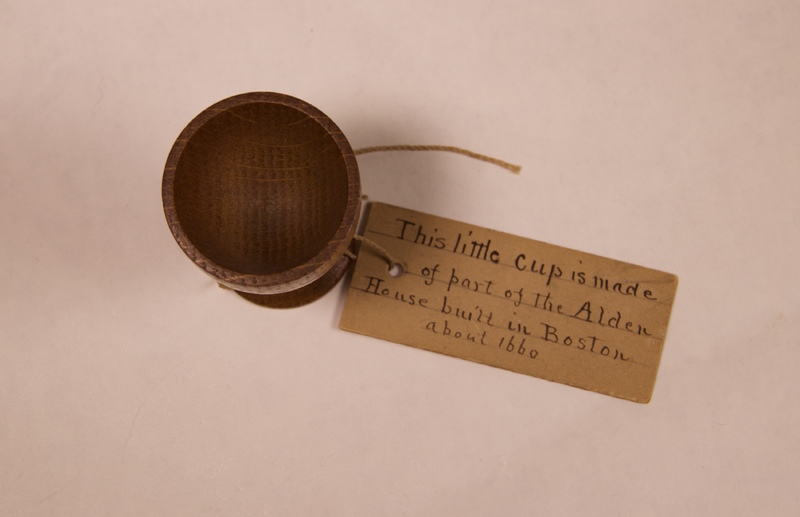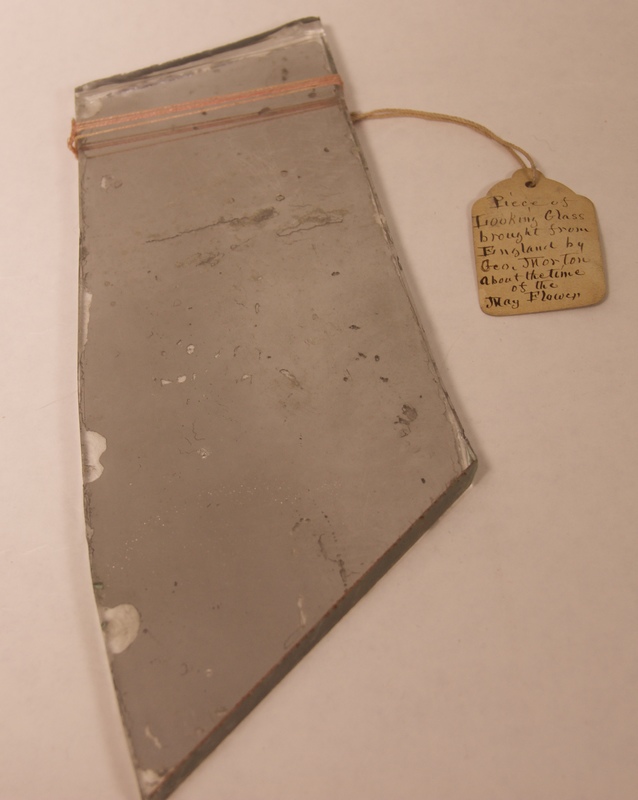Sheldon's Interpretation
Were these all that Sheldon cared about – the cup’s functionality and the impact it had on human lives? If so, the writer may be right in calling Sheldon a “junk dealer” (Discover, 2013). Fortunately, that is not the case.
The fact that he collected other objects of similar interest and time period shows that he cared about something deeper than functionality. What he cared about was the object’s representation. As explained above, the cup was made from a wood that was used in building the Alden House, one of the first buildings to house America’s founding families. Because of this, it was considered a historical relic. But it was also a relic that bridged Henry Sheldon in the 19th century to the pilgrims of the 17th century. Having this in the display of his museum allowed for him as well as his audience to look back, wonder at, and be curious about what life was like. In other words, the cup itself was a representation of the 1600s, which became the means for him to learn more and gain knowledge about the life of pilgrims. And in the bigger picture, it triggered him to learn about America’s early history.
A similar point could be made for the glass shard, introduced earlier. Sheldon writes as a description, “Piece of Looking Glass brought from England by Geo. Thorton about the time of the Mayflower” (Sheldon, n.d.). Again, the looking glass (mirror), like the cup is a historical relic. And rather than focusing on the object itself and what the glass was used for, Sheldon must have been inspired by this shard to look into the life of the pilgrims that came to the New World on the Mayflower and to learn more about them.
It is worth noting here also that while the objects itself in his collection didn’t fit into any particular theme, the origins of these items may actually fit into a particular time period, in which Sheldon may have been interested in. For these two objects, for example, the origins both trace back to the time of Mayflower and the colonial stages of America.
For him to collect these odd relics from such times must not have been easy. But to purposely do so and to keep them speaks for his intention to focus on the objects' representation over functionality, which provided the reason to gain new knowledge of a part of the American origin story. Perhaps, this is why the Sheldon museum was advertised in the Middlebury newspaper as a place “designed for the public benefit” (Thorp, 1888): a benefit of historical awareness through an object.


